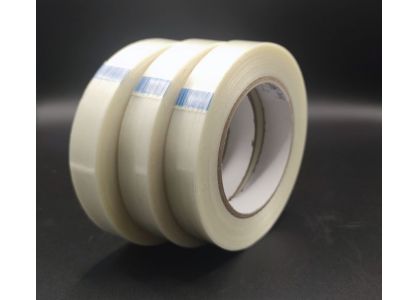
Selecting the right filament insulation tape is critical for applications ranging from motor windings to high-voltage cable bundling. Buyers must assess both performance (adhesive strength, tensile durability, temperature resistance) and supplier reliability. This guide covers:
Key quality control tests for high-strength fiberglass electrical tape
How to compare fiberglass insulation tape with adhesive and transparent filament tape heat resistant types
A procurement checklist to vet tape suppliers and brands
| Tape Variant | Core Feature | Typical Use Cases |
|---|---|---|
| Fiberglass Insulation Tape with Adhesive | Heat-resistant adhesive layer | HVAC ductwork, oven cable bundling |
| Transparent Filament Tape (Heat Resistant) | Clear backing with fiberglass filaments | Aesthetic wiring, LED strip installations |
| High-Strength Fiberglass Electrical Tape | Extra fiber reinforcement for tensile load | Heavy-duty motor and transformer insulation |
Each variant balances flexibility, adhesion, and strength differently—choose based on your project’s mechanical and thermal demands.
Peel Strength Test: Measures force (N/25mm) to remove tape from steel or plastic.
Residue Check: Tape should leave no adhesive on surfaces post-removal.
Tensile Test: Determines maximum load before break (target >200 N/25mm for high-strength tape).
Abrasion Resistance: Evaluate wear after repeated flexing or abrasion cycles.
Assess transparent filament tape heat resistant variants for stability up to 155°C (or higher).
Verify dielectric performance after thermal cycling (ASTM D1000 or IEC standards).
Test against oils, solvents, and humidity environments.
Confirm certificate for UV or moisture exposure when used outdoors.
Check spool design and dispenser compatibility to prevent tangling or edge damage.
Some tapes feature expiration markers or printed grids—useful for maintenance scheduling.
Explore green taping by selecting tapes made from recycled backings or low-VOC adhesives.
Technical Data Sheets (TDS): Must include tests for adhesion, tensile, heat and chemical resistance.
Sample Evaluation: Request 1–2 m rolls of each variant to test under your actual process conditions.
Certifications: Look for ISO 9001, UL 510, RoHS compliance, and region-specific approvals.
Minimum Order Quantity (MOQ) & Lead Time: Ensure alignment with production volumes and schedules.
Pricing & Terms: Negotiate bulk discounts, shipping terms, and quality guarantees (e.g. batch traceability).
Q1: How do I choose between clear vs. opaque filament tape?
Clear transparent filament tape heat resistant is best for visible installations; opaque variants excel in mechanical strength.
Q2: What thickness should I specify for high-strength applications?
For heavy bundling, choose tapes ≥0.17 mm (6 mil) thickness with reinforced fiberglass filaments.
Q3: Can fiberglass insulation tape with adhesive be used outdoors?
Only if the adhesive is rated for UV and moisture exposure—check environmental resistance data.
Q4: How to verify tensile strength claims?
Request third-party test certificates (ASTM D1000) and conduct in-house pull tests before bulk purchase.
With these evaluation criteria and procurement guidelines, you can confidently source the optimal filament insulation tape for your application—whether that’s high-strength fiberglass electrical tape for heavy-duty motors or transparent filament tape heat resistant for precise wiring. Engage suppliers early, test samples rigorously, and secure terms that support both quality and supply chain resilience.